19th Century Mansions for the Masses in Bushwick
By the last two decades of the 19th century, most neighborhoods had multiple-unit buildings that were technically tenements by definition, but were certainly not slum buildings.

Bushwick. Photo by Cate Corcoran
Editor’s Note: A version of this post was originally published in 2014. You can view the original post here.
By definition, a tenement is a building with multiple tenants, nothing more sinister that that.
In 1867, the New York State defined it as “any house, building, or portion thereof, which is rented, leased, let, or hired out to be occupied or is occupied, as the home or residence of more than three families living independently of one another and doing their own cooking upon the premises, or by more than two families upon a floor, so living and cooking and having a common right in the halls, stairways, yards, water-closets, or privies.”
The term became forever attached to horrible, crowded and substandard slums populated by the poorest of the poor, giving a stigma to all multiple unit dwellings that wouldn’t disappear until the first quarter of the 20th century.
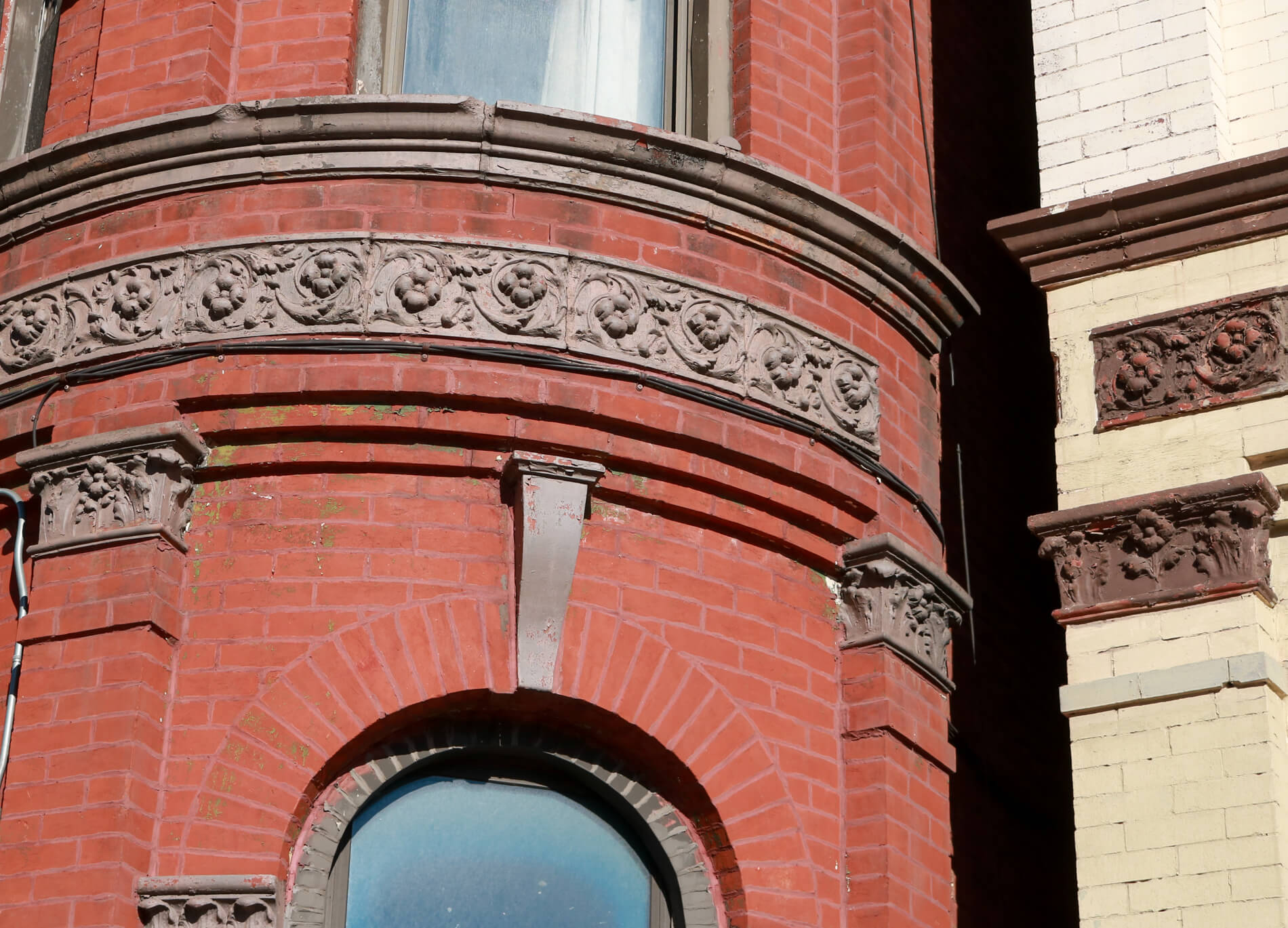
By the last two decades of the 19th century, most neighborhoods had multiple unit buildings that were technically tenements by definition, but were certainly not slum buildings. They were built for middle class families.
The developers of the day commissioned the same architects who designed fine homes and mansions to also design tenement buildings, and today’s twin buildings at 697-703 Bushwick Avenue are fine examples of what could be done with the form. Similarly set up buildings can be found in all of brownstone Brooklyn.
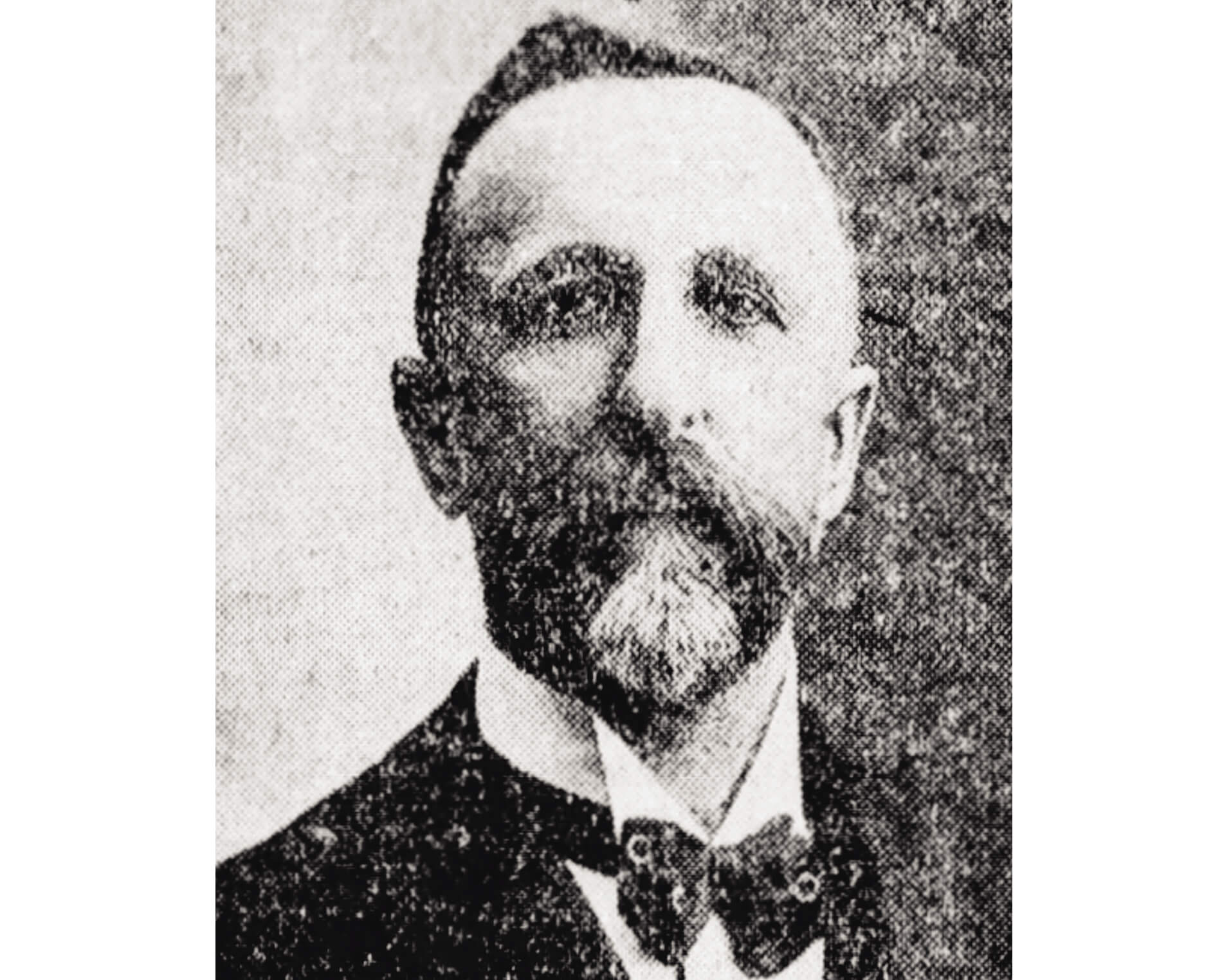
Theobald Engelhardt was THE architect in what was called the Eastern District, which included Bushwick, parts of Williamsburg and the eastern part of Bedford. Over the course of his long career, he designed all kinds of buildings in the district, including most of the area’s fine mansions. These tenements he designed in 1889 were fine-looking mansions for the masses.
Many of these buildings were set up with two apartments per floor, on either side of a central stair, for a total of eight apartments. Both of these buildings have double that number of units, now with four apartments per floor. Without seeing the original plans, I don’t know if that subdivision was original or was done later. Many of the tenements did have smaller apartments, and were marketed to a less affluent market than the floor-through flats.
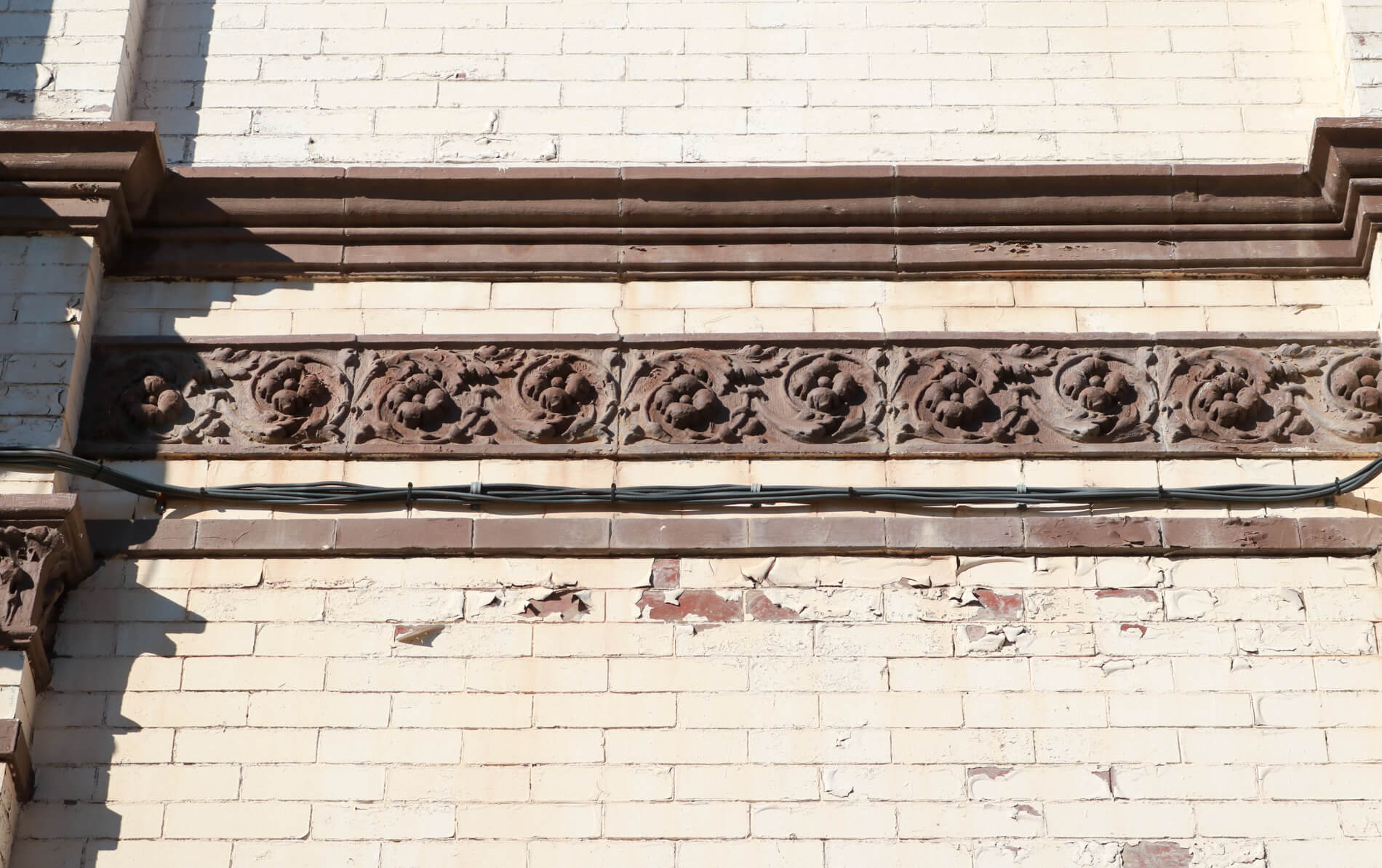
These are both handsome buildings. Too bad the corner building, 701-703, was painted white. Perhaps in time, someone will strip the paint, bringing the original red brick and rich terra cotta trim back to life. I hope they will also replace the cornice, which can still be seen on its neighbor, 697-699. Without it, the building looks incomplete. I would imagine that it also has more frequent water damage. Cornices had a practical purpose as well as a decorative one; they deflect water away from the façade.
Engelhardt designed these buildings for a Dr. H. F. Praeger, a local physician who also invested in real estate. The good doctor lived on Tompkins Avenue, across the street from what is now Von King Park. Over the years tenants included merchants, a widow and her grown daughter, clerks and grocers, teachers, and other ordinary working folk, as well as an interesting collection of miscreants and mischief makers.
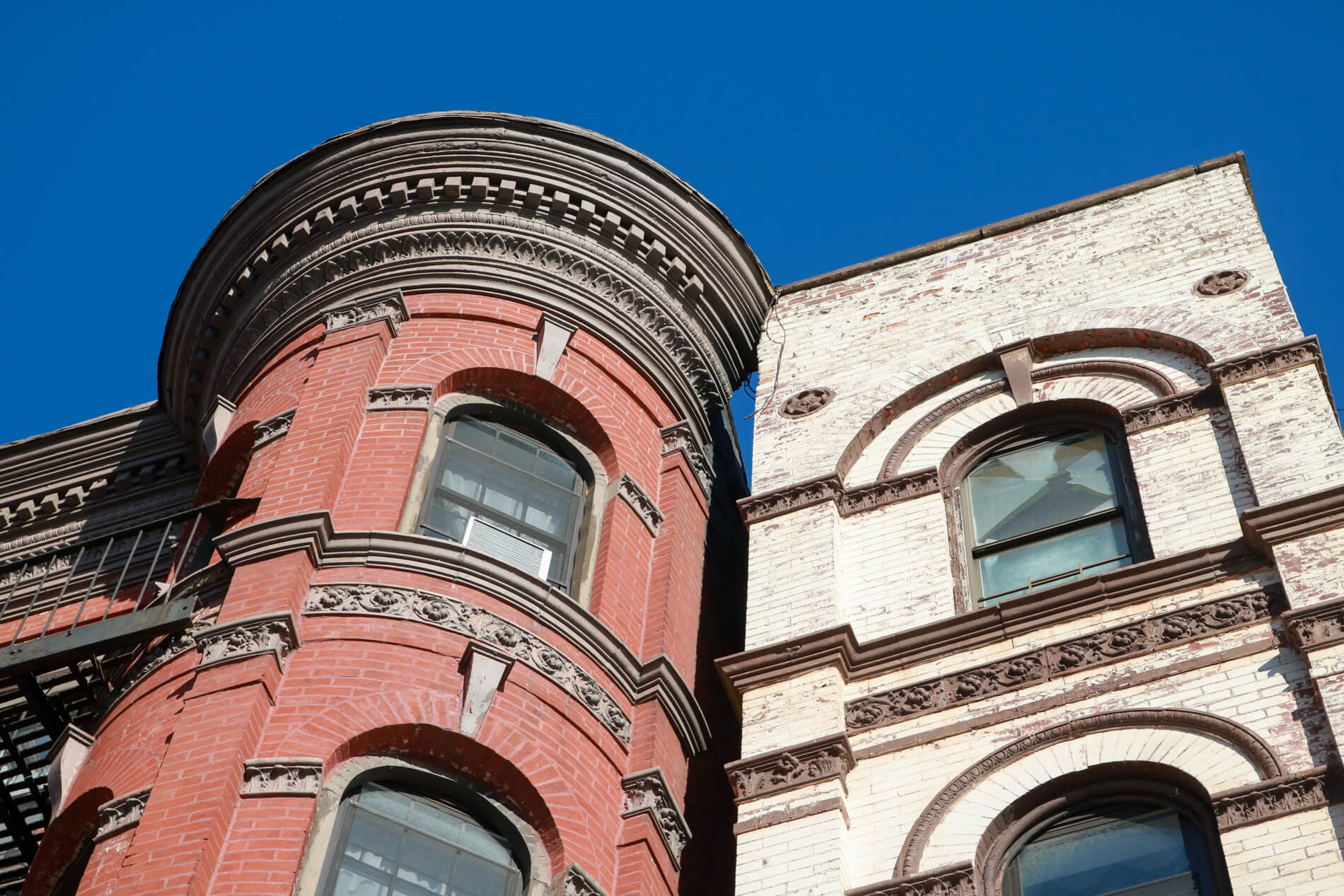
In 1894, one of the tenants at 703 was a wine merchant named Joseph Fuchs. In December of that year, he lay at death’s door, the victim of an altercation between himself and another wine merchant named Gottfried Westermacher, at Arion Hall. Westermacher had pushed Fuchs, and in the course of the fall, must have caused internal injuries. Both men had gone home, but later Fuchs lay dying. Westermacher was arrested.
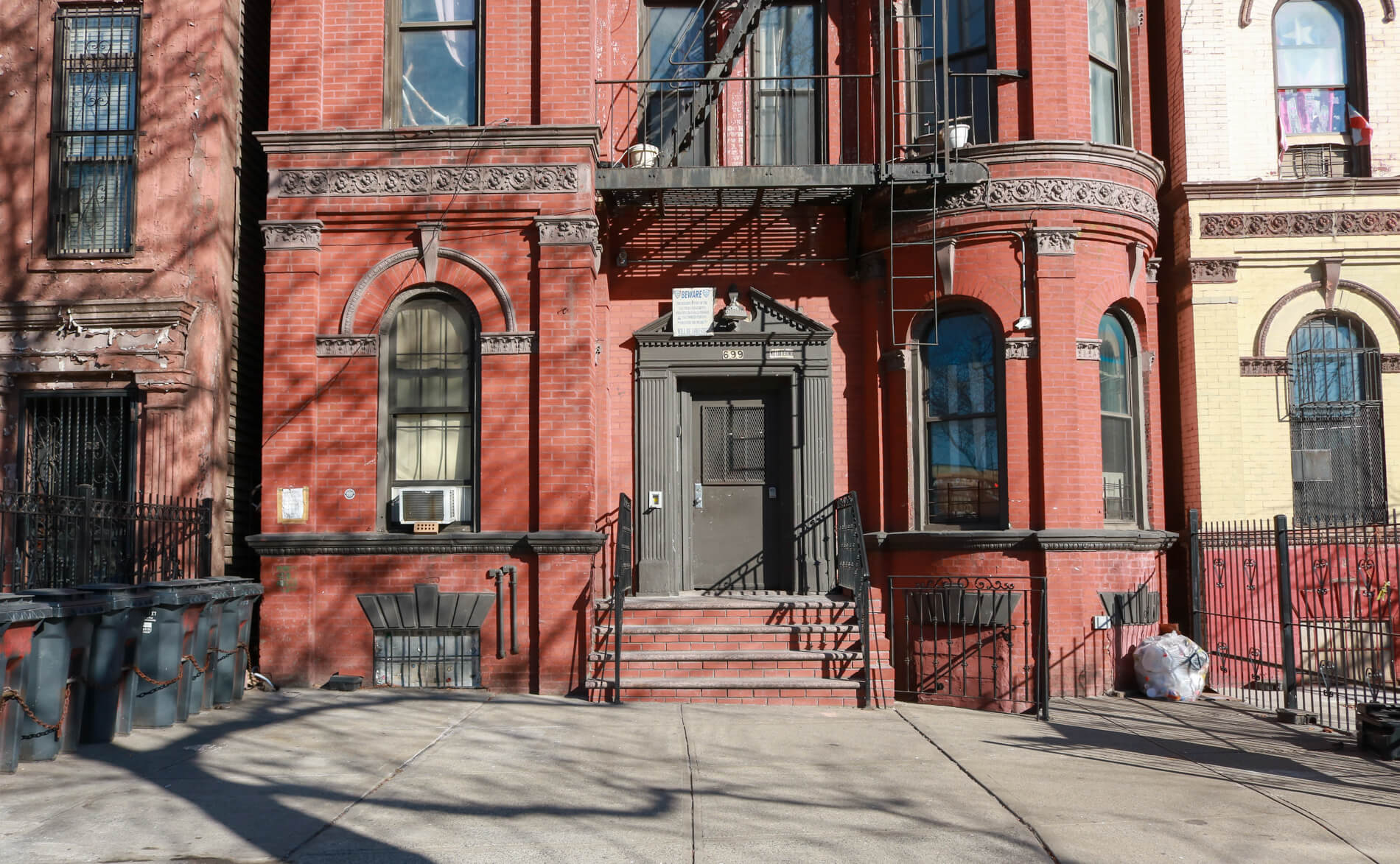
Another tenant in the corner building was Charles Nolan. In 1897 he was arrested for stealing bicycles. It was later learned that he was the ringleader of a large bike stealing operation. He was young and well dressed, and would go to various bicycle shops in Brooklyn and rent or test-drive bikes, and then never return them. He then sold them to other bicycle shops.
Bicycles were the hottest fad of the day, and there were many shops all over Brooklyn. He specialized in the better models. He did quite well until police and shop owners figured out his M.O. and were finally able to capture him.
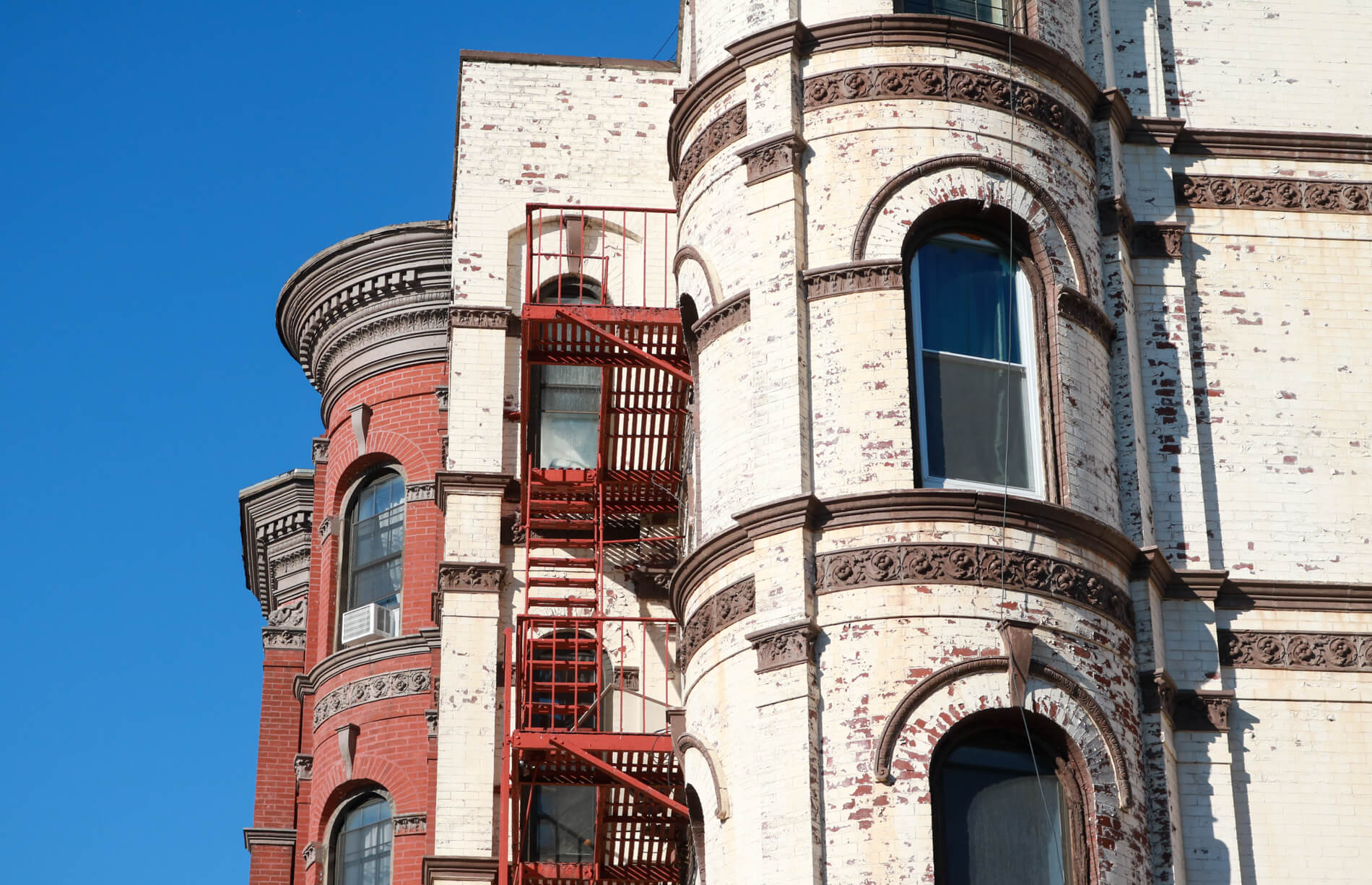
A tenant in the other building, 699 Bushwick, was a coal dealer named Edward H. Weisbrod. In 1909, he and another man were arrested for short measuring coal deliveries. The two sold what was supposed to be 10,000 pounds of coal to the Street Cleaning Department at Sterling Place and Bedford Avenue. They made the delivery and were paid for the shipment. Who knows what 10,000 pounds of coal is supposed to look like? It’s a lot of coal. Unfortunately for them, an official from Weights and Measures happened to be on hand, and he figured out that the delivery was only 8,500 pounds. Oops.
Related Stories
- Neo-Grec Turns the Corner in Prospect Heights
- A 19th Century Bushwick Home for Brooklyn’s Elderly and Indigent
- The Doctor’s Row of Bushwick, Built by a Beer Baron
Email tips@brownstoner.com with further comments, questions or tips. Follow Brownstoner on Twitter and Instagram, and like us on Facebook.

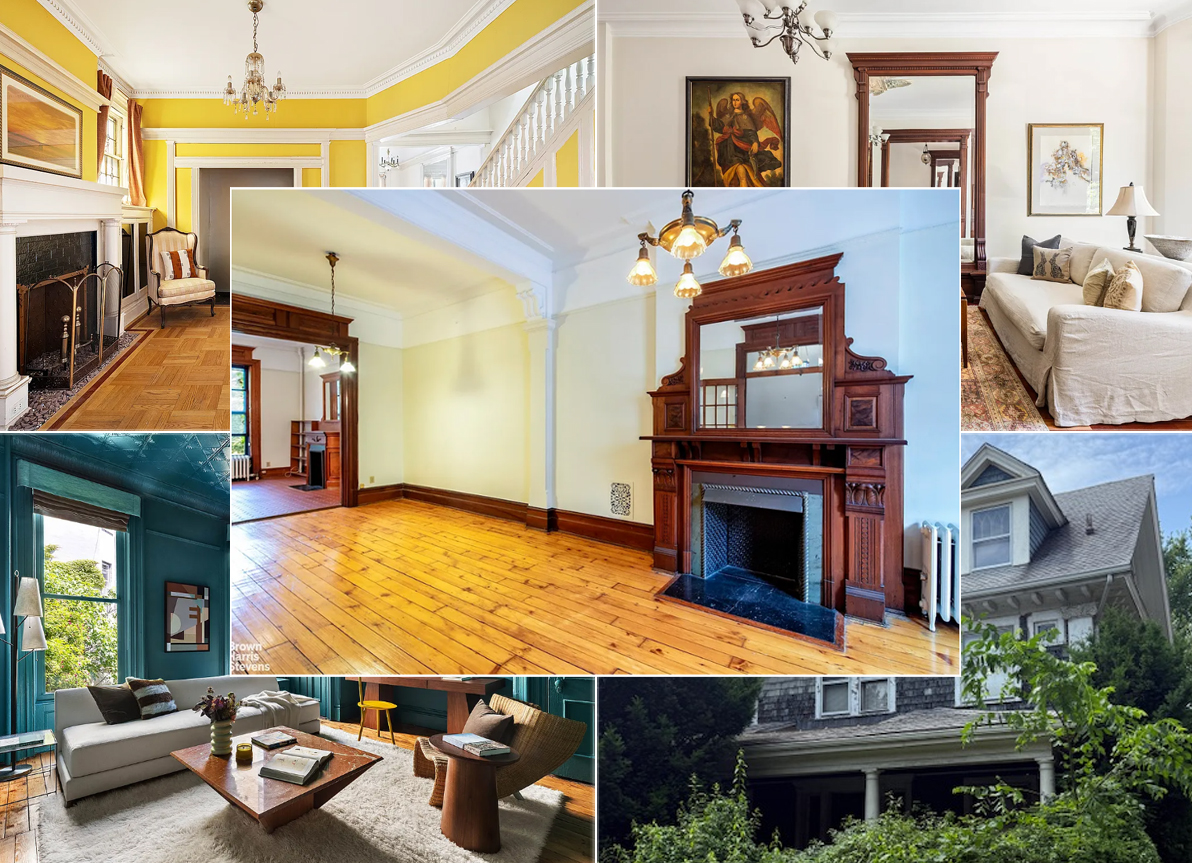



What's Your Take? Leave a Comment